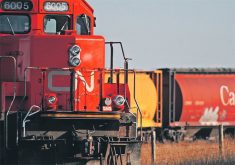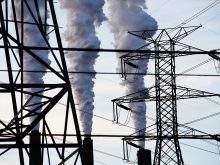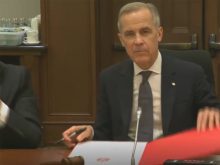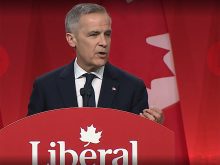For decades, soil scientists have studied nitrous oxide emissions from cropland during the growing season because they assumed that most emissions occurred from May until October.
A University of Guelph and University of Manitoba study, published earlier this year, suggests that is incorrect.
In cold regions of the Northern Hemisphere, like Western Canada and northeastern China, a third or two-thirds of nitrous oxide from cropland might be released from November till April, when the soil thaws, freezes and thaws again.
“It is possible that 35 to 65 percent of total annual N2O emissions could be attributed to thaw emissions,” a collaboration of scientists wrote in the paper, published in Nature Geoscience.
Read Also

Farming Smarter receives financial boost from Alberta government for potato research
Farming Smarter near Lethbridge got a boost to its research equipment, thanks to the Alberta government’s increase in funding for research associations.
One of the researchers and lead author of the paper is Claudia Wagner-Riddle, University of Guelph environmental scientist.
Links to other stories in this Special Report:
- Alberta’s carbon tax plan may offer insight for others
- Carbon taxation
- Carbon tax: A bitter pill for farmers
- Alfalfa, grasses top choices to aid in carbon sequestration
- Carbon tax Down Under went under
- Meeting EU emission standards can be a hurdle
- Can equipment makers do more to make a greener machine?
- Download a PDF of the complete Special Report here
Wagner-Riddle was interested in N2O emissions from thawing soils because nitrogen fertilizer and manure applied to cropland is a significant contributor to global warming.
It’s estimated that N2O is 300 times more potent a greenhouse gas than carbon dioxide. In Canada, more than 70 percent of all N2O emissions come from agriculture, almost entirely from cropland soils.
One of Wagner-Riddle’s main partners in the study was Mario Tenuta, University of Manitoba soil scientist. The study leaders and their team monitored nitrous oxide emissions every 30 minutes from the Glenlea research station south of Winnipeg and a site in Ontario for nine and 14 years, respectively.
The results from Glenlea showed that emissions were negligible in January and February but spiked in March and April when the soil was thawing.
In certain years, on specific crops, the emissions in March and April dominated the total amount of N2O released for the year.
“In winter wheat for example, one year the emissions from the freeze-thaw were 90 percent,” Wagner-Riddle said.
The site in Elora, Ont., also showed more emissions in the winter thaw period, but the spike wasn’t as noticeable as the Manitoba results.
The NO2 released was more consistent from January to March in Ontario, possibly because the climate is milder so a thaw is more likely to occur in the middle of winter.
On average, the percentage of annual N2O emissions from the freeze-thaw phenomenon was 53 percent at the Manitoba site and 29 percent in Ontario.
The results surprised experts who had thought that nitrous oxide was released primarily in the growing season, especially in the spring period following fertilizer application.
The results from Manitoba and Ontario showed that colder soils release more NO2 during spring thaw.
Wagner-Riddle said the data from Manitoba show the soil for that site was much colder and emissions there were also higher.
Laboratory results back up the finding. When a soil sample is chilled to -15 C, it releases more nitrous oxide than a soil taken to – 5 C.
“The intensity of freezing, meaning how low the temperature gets … that impacts what happens at thaw.”
The scientists used the results from the Glenlea and Ontario sites to estimate the amount of N2O released globally from agricultural soils from freeze-thaw. Using computer models, they calculated that the freeze-thaw cycle adds 17 to 28 percent to all nitrous oxide emissions for agricultural soils.
Most of those additional emissions would come from Western Canada, the U.S. Midwest, northeastern China, Kazakhstan, Russia and Ukraine.
The area of cropland that freezes is minimal in the Southern Hemisphere, the paper said.
“(But) there are many areas of cropland in the world that freeze (and) where these emissions are important,” Wagner-Riddle said. “That has been neglected. There’s not been a lot of study on that.”
Wagner-Riddle and her colleagues were able to measure emissions in Canada and come up with global estimates, but they don’t fully understand what is happening in the soil and why N2O is released during spring thaw.
“We don’t know exactly the mechanism,” she said.
That will require further study.
The scientists hope to duplicate the research in Saskatchewan to see if results from Manitoba’s Red River Valley apply to other parts of the Prairies.

















